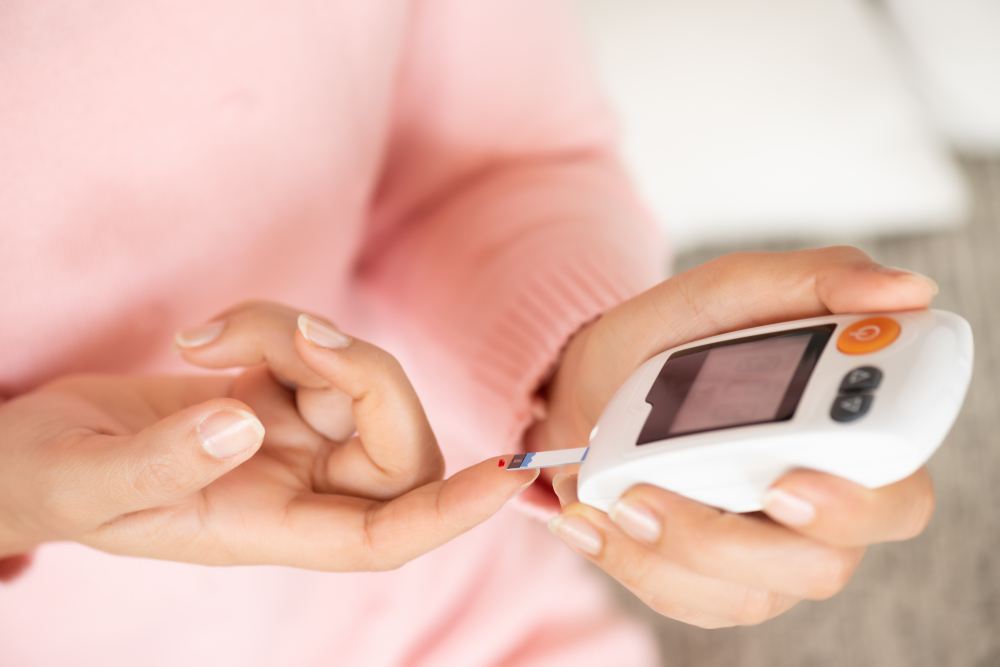Dijabetes melitus, ili šećerna bolest, poremećaj je karakteriziran neravnotežom u razini glukoze (šećera) u krvi. Ova bolest javlja se kada gušterača potpuno ili djelomično prestane proizvoditi hormon inzulin ili kada proizvedeni inzulin nije učinkovit u tijelu. To dovodi do situacije u kojoj stanice ne primaju potrebne hranjive tvari za preživljavanje. Dijabetes može biti nasljedan, s 50% šanse da će osoba razviti ovaj poremećaj. Rizik se povećava ako je osoba prekomjerne tjelesne težine.
Bolest se može manifestirati kroz niz simptoma i znakova, uključujući:
- Polidipsija (pojačana žeđ)
- Poliurija (pojačano mokrenje)
- Polifagija (pojačani apetit)
- Gubitak tjelesne mase
- Umor
- Laboratorijski nalazi (natašte koncentracija glukoze u krvi iznad 7 mmol/l ili iznad 11 mmol/l nakon obroka)
Dijabetes se može klasificirati u različite tipove na temelju etiologije, kliničkih simptoma, terapije, vremena pojave i brzine razvoja akutnih i kroničnih komplikacija.
Hipoglikemija, što su niske razine glukoze (šećera) u krvi, definira se kao <3.0 mmol/l. Klinički znakovi hipoglikemije mogu se pojaviti čak i na višim razinama. Ako se ne liječi, hipoglikemija može dovesti do trajnih oštećenja mozga.
Hipoglikemija je najčešći metabolički poremećaj i javlja se kada je poremećen metabolizam šećera u tijelu. Može je uzrokovati:
- Nedovoljni unos ugljikohidrata ili preskakanje obroka
- Prekomjerna tjelesna aktivnost
- Prekomjerno doziranje inzulina ili drugih hipoglikemijskih lijekova
- Izloženost ekstremnim hladnoćama ili vrućinama
- Konzumacija alkohola ili kronična konzumacija alkohola, što također može dovesti do hipoglikemije
Kako se manifestira hipoglikemija?
Simptomi i znakovi hipoglikemije mogu varirati od jednog pacijenta do drugog. Najčešći simptomi hipoglikemije uključuju:
- Konfuziju
- Bljedilo i vlažnu kožu
- Glad
- Normalnu ili povećanu brzinu disanja
- Povećan puls, normalan krvni tlak
- Dvostruki vid, trnci u udovima
- Glavobolju
- Pospanost
- Agresivnost ili neuobičajeno ponašanje
- Znojenje
- Napadaje
- Apatiju, nemir
- Komu
- Gubitak svijesti
- Neurološki poremećaji
Postupak za upravljanje hipoglikemijom:
- Ocjena sigurnosti na mjestu događaja i uklanjanje potencijalnih opasnosti prije pružanja pomoći.
- Procijenite pacijenta primjenom pristupa ABCDE.
- Nabavite povijest uzorka simptoma i znakova (S), dokumentirajte informacije, medicinsku povijest, medicinske narukvice i identifikacijske kartice.
- Izmjerite i dokumentirajte razinu glukoze u krvi.
- Ako je osoba svjesna i surađuje te ima nisku razinu glukoze u krvi, pružite oralnu glukozu (voćni sok, slatko piće ili čokoladu) dok razina šećera ne poraste na 5 mmol/l.
- Ako je osoba nesvjesna, uznemirena ili ne surađuje, dajte glukozu intravenozno (titrirano prema odgovoru).
- Ponovno provjerite razinu glukoze nakon 10 minuta (ciljna vrijednost je 5 mmol/l).
- Promjena svijesti trebala bi se dogoditi brzo.
- Ako se stanje pacijenta ne promijeni, prevezite ga u bolnicu uz nastavak pružanja njege.

